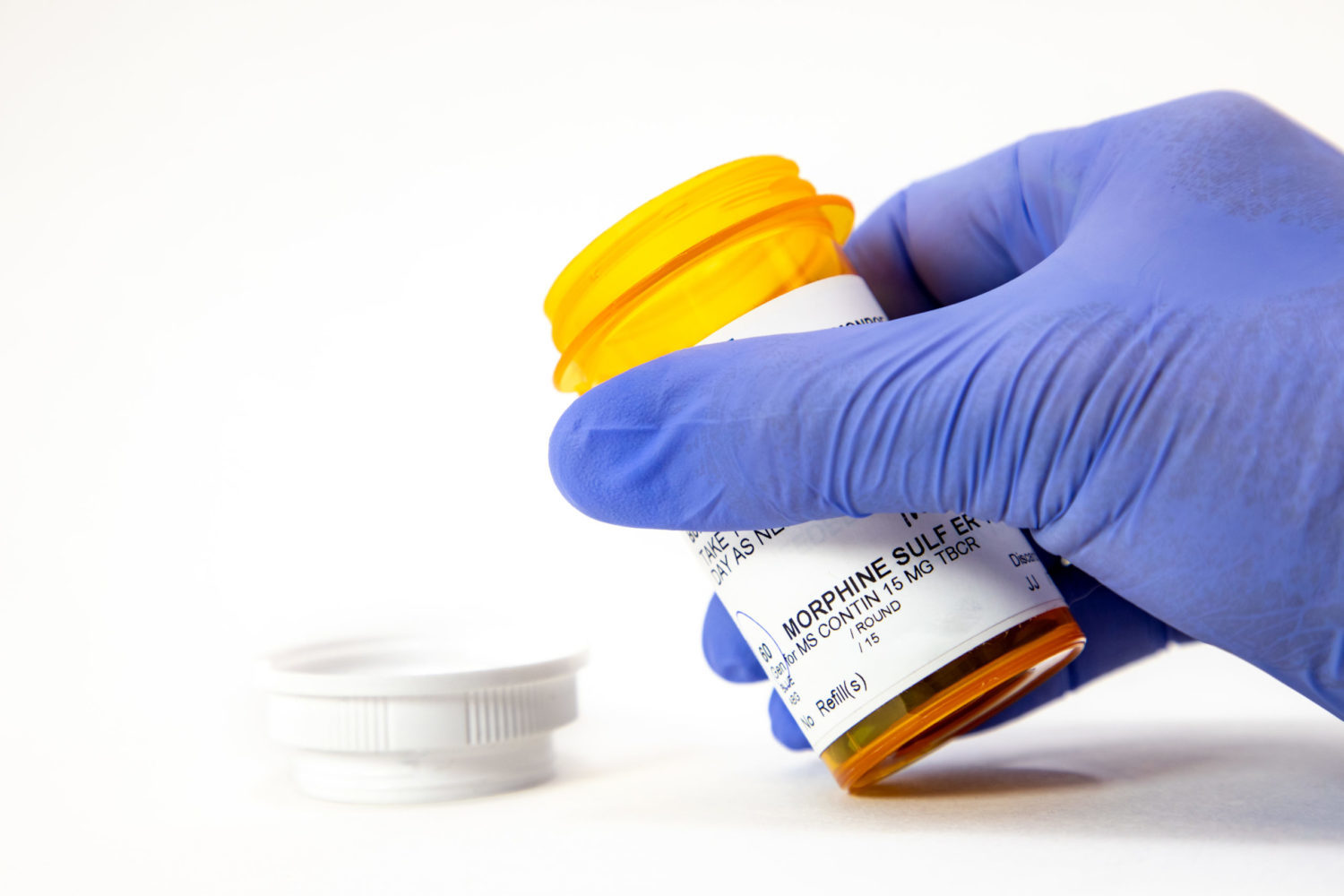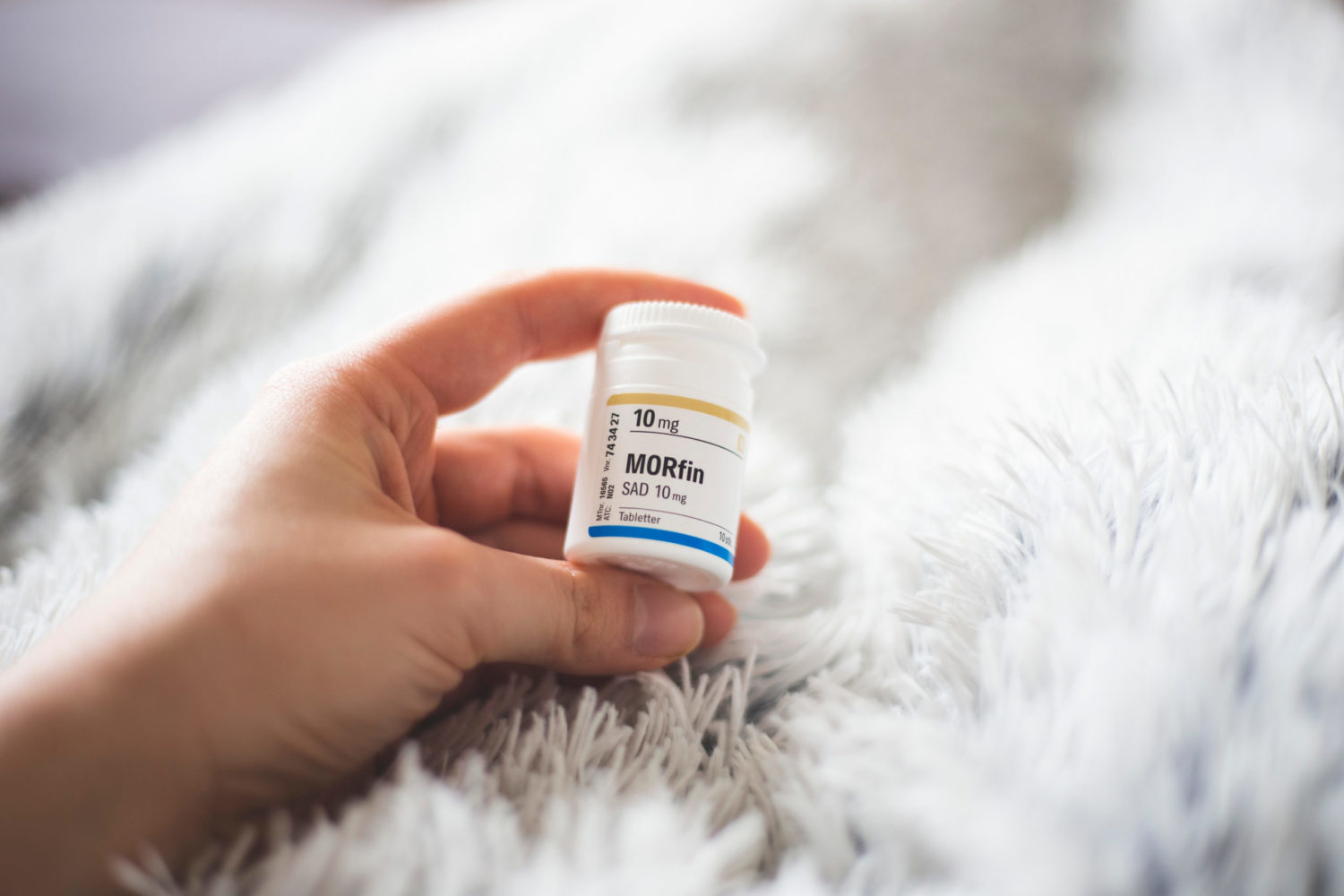Morphine is a very effective prescription drug used in the treatment of pain. In clinical settings, doctors administer morphine to patients with serious injuries, post-surgery patients, and other chronic pain conditions. Sadly, morphine is of the opioid family. Meaning it attaches to opiate receptors to promote its pain-relieving action. Its ability to cause feelings of euphoria or pleasure makes it highly addictive to many people.
Whether the addiction is from prescription or illegal use,morphine addiction is hard to drop but not impossible. If you and or any of your folks have become morphine-dependent, overcoming it and the morphine withdrawal symptoms that follow may be confusing, and perhaps, frightening.
However, there’s light at the end of the tunnel for both addicts and those who care for them. If you’re wondering what morphine withdrawal of symptoms, this article will help. You’ll learn about the usual morphine withdrawal signs, a typical withdrawal timeline, and of course, ways to seek help.
Why is Morphine So Addictive?
Table of Contents
For a drug named after the Greek God of dreams, Morpheus, its effect on the brain shouldn’t be surprising. Morphine puts its abusers in a dreamlike state that’s often pleasurable. You can’t overemphasize it; morphine is highly addictive. Its chemical structure is quite similar to a synthetic narcotic known as heroin.
Data from the Substance Abuse and Mental Health Services Administration reveals that over half a million people abused morphine within two years. What’s more, reports show a total of 500,000 opioid overdose deaths within 20 years. Investigations into these deaths revealed these culprits below.
- Naturally-derived opioid, which includes morphine, codeine
- Methadone, a powerful synthetic opioid
- Synthetic opioids like fentanyl, oxycodone, and hydrocodone, and morphine
- Heroine, an illegally designed narcotics, which is made from morphine.
The reason why morphine and other opioids are so addictive is that they attach to the natural opiate receptors of the brain before producing the pain-relieving action. Though majorly found in the brain, these receptors are also in the spinal cord and digestive system.
When morphine is consumed, it promotes the release of brain chemicals called dopamine. The release of this chemical offers morphine users pleasure or euphoria. This dopamine is known to reinforce pleasurable engagements, so morphine attachment to these receptors causes them to go into overdrive functioning.
Naturally, the human brain doesn’t produce large quantities of these pleasure promoters called dopamine. With morphine in the picture, it tells the brain to continuously behave in a specific pattern, i.e., producing more dopamine. This is terrible news for the brain since it is highly responsive to opioids of all types, whether synthetic or natural. Altogether, this makes people seek the continuous use of morphine.
Also, the fact that heroin is derived from morphine makes it possible for both opioids to produce similar euphoria effects. The following are the common effects produced when morphine is orally used, injected, or smoked.
- Pain relief
- Euphoria or dream state
- Unusual drowsiness
- Reduced feeling of anxiety
- False sense of well-being
- An induced feeling of calmness
If you find yourself among the users of morphine, whether illegally or against your doctor’s recommendation, chances are your dependence on the drug may have transitioned into an abuse disorder. Let’s face it; substance use disorder isn’t easy to manage. Apart from the physical symptoms that can break down your body, the physiological effects are also not pretty.
Morphine Withdrawal Symptoms

Withdrawal symptoms are often described as the body’s response to the unavailability of the addictive substance in the body. Stopping the use of morphine or any other opioids (like methadone and heroin) can be highly unpleasant. You should expect to feel like you’ve got the armageddon of flu. These symptoms can kick in as fast as hours after significant reduction or sudden stoppage of the drug.
Like all opioids, how long morphine withdrawal symptoms last vary in different people. What’s more, various factors determine how long withdrawal symptoms last. For example, withdrawal symptoms are usually more severe with long-term abusers. Furthermore, the severity of symptoms can also depend on the drug’s bioavailability in the bloodstream or the central nervous system.
That’s said, morphine can be in a person’s system for relatively more extended periods based on the type of morphine. Usually, morphine is a short-acting opioid. However, there are extended-release types. The withdrawal symptoms of the short-acting type show up quickly after the last morphine dose.
On the other hand, the extended-release type often takes a different long and progressive pattern. This version of morphine usually shows withdrawal symptoms after many hours or even days after taking the last dose. It also has the potential to lead to a relapse in many addicts. This is because the journey to recovery is often longer. Hence, addicts may be quick to succumb to the temptation of a quick “fix” instead of pulling through the highly unpleasant feeling.
It’s common for most abusers of morphine to experience both physical and psychological symptoms after long exposure. The usual physical symptoms of withdrawal include:
- Muscle pain
- SevereSevere flu-like feeling
- Excessive Sweating
- Cold
- Runny nose
- Teary eyes
- Nausea
- Skin-crawling
- Vomiting
- Tremors
- Diarrhea
- Gooseflesh
- Heavy heartbeat
Morphine psychological withdrawal symptoms include:
- Anxiety
- Irritability
- Restlessness
- Agitation
- Insomnia
- Uneasiness
Below, we’ve provided a more detailed analysis of the symptoms;
Intellectual or cognitive impairment
This physiological symptom is usually the most disturbing. It is often characterized by a lack of focus and an inability to solve simple or complex issues. The person could find it almost impossible to engage in multitasking or even keep track of multi situations. In short, the state of mind is not organized correctly.
Memory impairment
It’s not uncommon to find recovering addicts with challenges in remembering some information about their lives. This doesn’t come as a surprise because distinct parts of the brain handle memory and cognitive functioning. In fact, it’s normal to observe both cognitive and memory impairment symptoms in people recovering from prolonged exposure to morphine. The memory challenges include a lack of ability to remember long/short term memories. Confusing or false memories might also be part of the picture.
Emotional disconnection
Protracted withdrawal symptoms also come with an inappropriate reaction to daily engagement and people. A patient may have only a little or zero emotional response to passionate conversations yet become agitated by a fall of a near glass of water.
People suffering from these symptoms often display quick emotional breakdown, finding it challenging to maintain closeness with other people around. A sudden burst of anger without any provocation is also quite common. Patients in this boat will require therapy and perhaps, medication, depending on the severity.
Inability to experience pleasure from anything
Sexual dysfunction is another common protracted withdrawal symptom. People in this boat may experience difficulty in being aroused.
Sometimes, it could be an inability to attain sexual satisfaction. Usually, people suffering from this symptom have gotten used to sex in a state of euphoria. Withdrawal from the opioid typically causes a feeling of “not being enough.” Meaning they have a feeling that sex (devoid of morphine) isn’t enough.
In men, it could manifest as erectile dysfunction associated with emotional disconnect. Also, it’s not uncommon for drug abusers and addicts to share needles with others drug users. Therefore, contracting HIV might also lead to an emotional breakdown, making a person uninterested in sex.
Depression
Protracted withdrawal symptoms can also include feelings of depression. This might be associated with feelings of isolation and anxiety. This symptom is also one of the most common among recovering addicts. It often makes them slip back into their past opioid-use lifestyle. If not quickly managed, it may lead to suicidal thoughts in some persons.
An empty feeling
By practice, the drug addiction management niche does not usually recognize spiritually-related withdrawal symptoms. However, many recovering addicts (who were formerly religious) present an inability to engage in spiritual activity.
The complaints often involve an impairment in their former way of connecting to God. This symptom is not only noticed among religious folks (as non-religious recovering addicts also complain of an inability to connect to “inner self.”)
They are often treated for depression (and other mind-related challenges) in treatment centers that consider spiritual matters a myth.
Physical symptoms
Yes, physiological symptoms are most common with protracted withdrawal cases. However, you’ll notice physical symptoms in most recovering patients. These include sweating at night, poor motor skills, insomnia, trembling, tiredness, headaches, etc. In some recovering addicts, all these protracted withdrawal symptoms sometimes occur at once, while some people only experience a few.
Morphine Withdrawal Timeline

The morphine withdrawal timeline varies. So there’s no one-size-first-all for all kinds of morphine. Still, the withdrawal symptoms typically follow a bell-shaped pattern. Meaning the symptoms start, increase, peak, and eventually start to decline.
If you’ve been asking yourself, “How long does morphine withdrawal last?,” the following is the timeline of a morphine withdrawal. It will further help you understand
- 8-24 hours
This is the stage after the last dose. A typical addict will naturally start to crave more morphine at this point. Because the brain has been rewired to depend on morphine’s availability in the body, the cravings will get higher as the half-life of the drug reduces. The half-life of an opioid is the time the body starts eliminating half of the drug’s dose.
As mentioned earlier, morphine has a relatively shorter half-life. It takes around 8-24 hours for the cravings or withdrawal symptoms to kick in. However, a long-acting or extended-release morphine might take 36 hours or more. Some people may still manage their craving with some distractions (or another pleasure-offering option) at this initial stage.
- Days 1-3
As time progresses, the craving will worsen. The addict will feel an almost uncontrollable desire to consume more morphine. This may be followed by frustration, sweating, tremors, etc. For most opioids, including morphine, the symptoms will reach their peak within a day. A long-acting or slow-release morphine naturally peaks many days later. At the peak stage, an addict usually feels very sick.
While withdrawal symptoms aren’t usually fatal, an addict can become overwhelmed with suicidal thoughts. Therefore, they might need to manage the recovery process. This stage is the most crucial as people tend to slip back if they have access to the drug. Unlike the initial stage, the distraction mechanism will likely not work.
- Days 7-10
For many morphine users, this stage starts to happen after a week of the last dose. The physical symptoms would have significantly reduced, leaving a few psychological effects of the drug. For Longer-acting morphine versions of opioids (like methadone), this stage may extend to 14 days or more.
- Days 30-180
The above timeline is not automatic. Opioid addiction is an established chronic medical condition. So, some people withdrawal symptoms many months (or even years) after the last dose. These cases of relatively longer withdrawal periods are referred to as protracted withdrawal.
This type of withdrawal symptom can last for as long as 180 days. Unlike the physical symptoms that come with acute or immediate withdrawal, protracted morphine withdrawal leans more to the physiological side than the physical side.
Morphine Withdrawal Help: Rehabs Of Armerica is Here to Help You
In summary, morphine is an effective but highly addictive painkiller. Its ability to bind to the opiate receptors and promote dopamine release is one common reason people quickly develop an addiction.
It has been reported that whether being used to genuinely treat pain or to simply get “high,” the chances of physical dependency are high. The sad reality is that the physical dependence on morphine’s pain-relieving action quickly leads to physiological dependence and addiction.
Many people don’t deliberately become addicted. The desire to find relief from chronic pain is one of the primary reasons people abuse morphine or abuse prescription drugs. This usually happens when they ignore doctors’ prescriptions by self-increasing their dosage.
If you’re lost on what to do for morphine withdrawal, at Find Addiction Rehab, there’s hope. You don’t have to weather the storm alone. Besides, self-detoxing can be dangerous. You need all the help you can get. Our site lists the various treatment centers and detox facilities around the country. So, you can get all the help you need from any location.
Each facility is equipped to provide diagnosis and care for those fighting addiction and mental health challenges. The recovery journey is within your reach. If you need more information on addiction treatment services, don’t hesitate to put a call through.
Charles F. has been an active part of the Florida recovery community for over 5 years. He began as a behavioral health technician at an addiction treatment facility in Ocala, Florida and has since begun training as a Licensed Addiction and Chemical Dependency counselor in Boca Raton. Charles’ passion involves the promotion of recovery and helping spread the hope of recovery to as many readers as possible!


